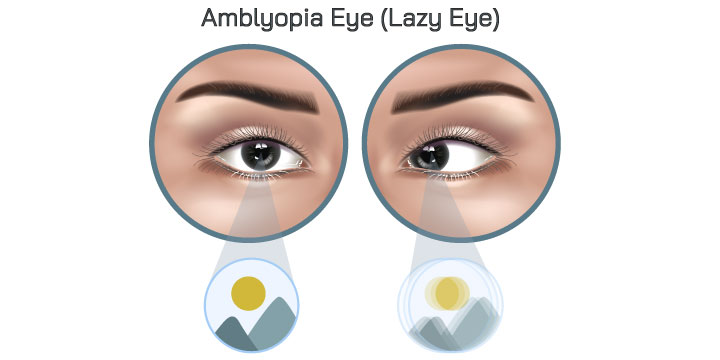Amblyopia (Lazy Eye) - Symptoms, Causes and Treatment
07-04-2024
What is Amblyopia (Lazy Eye)?
Amblyopia, commonly known as lazy eye, is a vision disorder that occurs when the brain and the eye are not working together properly. It typically affects one eye more than the other, causing a decrease in vision in the affected eye. Amblyopia can develop in childhood and if left untreated, it can lead to permanent vision loss in the affected eye. Early detection and intervention are key in managing amblyopia and preventing long-term vision problems. Regular eye exams are important in identifying and addressing any vision concerns early on.What Are The Causes Of Amblyopia (Lazy Eye)?
Amblyopia, commonly known as lazy eye, is caused by abnormal visual development during childhood. This typically occurs when one eye is favored over the other, leading to a decrease in vision in the weaker eye. The brain relies heavily on input from both eyes to develop proper vision, so when one eye is not being used effectively, the connections between the eye and the brain may not develop properly. This can result in reduced visual acuity in the affected eye, which can impact a person's overall visual function. Early detection and treatment of amblyopia are crucial to prevent long-term vision problems.What Are The Risk Factors For Amblyopia (Lazy Eye)?
There are several risk factors associated with Amblyopia, or Lazy Eye. One major risk factor is a family history of the condition, as Amblyopia tends to run in families. Additionally, premature birth or low birth weight can increase the risk of developing Amblyopia. Other risk factors include certain eye conditions such as strabismus (misaligned eyes), cataracts, or refractive errors like nearsightedness or farsightedness. It is important to be aware of these risk factors and monitor for any signs of Amblyopia in order to address them early and prevent further vision problems.What Are The Symptoms Of Amblyopia (Lazy Eye)?
Symptoms of Amblyopia, also known as Lazy Eye, may include a noticeable difference in vision between the two eyes, such as one eye appearing to be weaker or turning in or out. Patients with Amblyopia may also experience difficulty with depth perception or judging distances. Some individuals may have blurry or double vision, or struggle with reading or other visually demanding tasks. Children with Amblyopia may exhibit behaviors such as squinting, rubbing their eyes frequently, or tilting their head to see better. It is important to seek professional evaluation if any of these symptoms are present to receive appropriate treatment and prevent further vision problems.How is Amblyopia (Lazy Eye) Diagnosed?
Amblyopia, or lazy eye, is diagnosed through a comprehensive eye examination by an optometrist or ophthalmologist. During the exam, the doctor will assess the patient's visual acuity, eye alignment, and eye teaming ability. Special tests may be conducted to evaluate the eyes individually and together, such as the cover test, visual acuity test, and refraction test. Additionally, the doctor may use tools like a retinoscope or autorefractor to measure the eye's focusing ability. If amblyopia is suspected, the doctor may also perform a visual field test or fundus examination to further evaluate the health of the eye.How is Amblyopia (Lazy Eye) Treated?
Amblyopia, also known as lazy eye, can be treated through various methods depending on the severity of the condition. One common treatment option is patching, where the stronger eye is covered with a patch to encourage the weaker eye to work harder and improve vision. This treatment is less common today. Another method is using atropine eye drops in the stronger eye to blur vision, forcing the weaker eye to work harder. Vision therapy, which involves exercises and activities to improve eye coordination, can also be an effective treatment for amblyopia. In some cases, corrective lenses may be prescribed to help improve vision in the weaker eye. It is important to consult with an optometrist to determine the most appropriate treatment plan for each individual case of amblyopia.Is There A Cure For Amblyopia (Lazy Eye)?
As an optometrist, I can confirm that there is no definitive cure for Amblyopia, also known as Lazy Eye. However, early detection and treatment can significantly improve vision and reduce the impact of the condition. Treatment options typically include vision therapy, prescription glasses, and in some cases, patching or eye drops to strengthen the weaker eye. It is important for individuals with Amblyopia to follow a personalized treatment plan prescribed by their eye care provider to maximize their visual potential and prevent further vision loss. Regular eye exams are also essential to monitor progress and make any necessary adjustments to the treatment plan.How Can Amblyopia (Lazy Eye) Be Prevented?
Amblyopia, also known as Lazy Eye, can potentially be prevented through early detection and intervention. It is important for children to have regular eye exams starting at a young age to catch any vision problems early on. By addressing any issues promptly, such as refractive errors or strabismus, the development of amblyopia can potentially be avoided. Additionally, encouraging healthy eye habits, such as limiting screen time and taking breaks during prolonged periods of close-up work, can also help in preventing the development of amblyopia. Regular eye exams and promoting good eye health practices from a young age are key factors in preventing Lazy Eye.Regular eye exams with advanced technologies are essential for the early detection and treatment of amblyopia. Schedule an eye exam with an optometrist today!
Schedule An Appointment
Adult Eye Exams
Our advanced eye exams consist of 25+ modern tests and digital scans to assess eye health, function, and visual acuity.
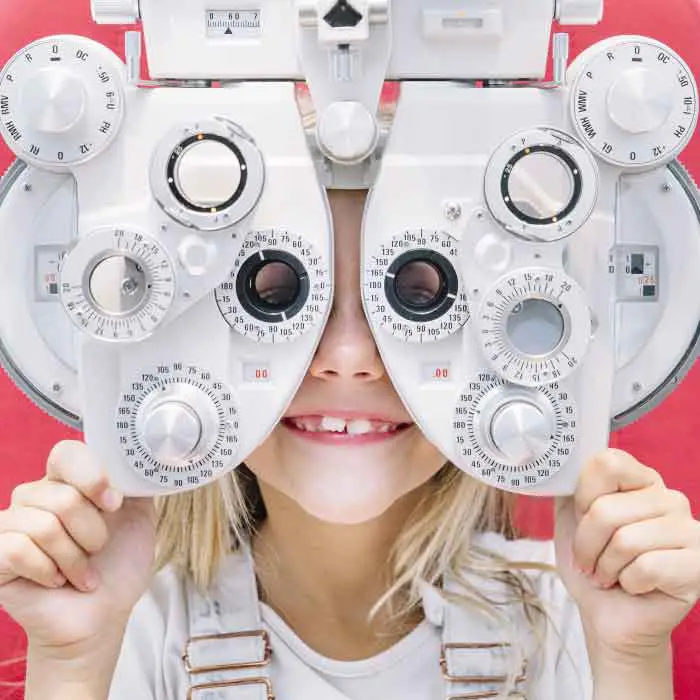
Child Eye Exams
Give your child a clear future with an annual eye exam from our experienced Edmonton optometrists.

Senior Eye Exams
Maintain your vision through your golden years with gold standard eye care from the optometrists at our Edmonton eye clinic.

Contact Lens Eye Exams
Our eye exams for contact lens wearers include test and digital scans to assess eye health, function, visual acuity, and lens fit.
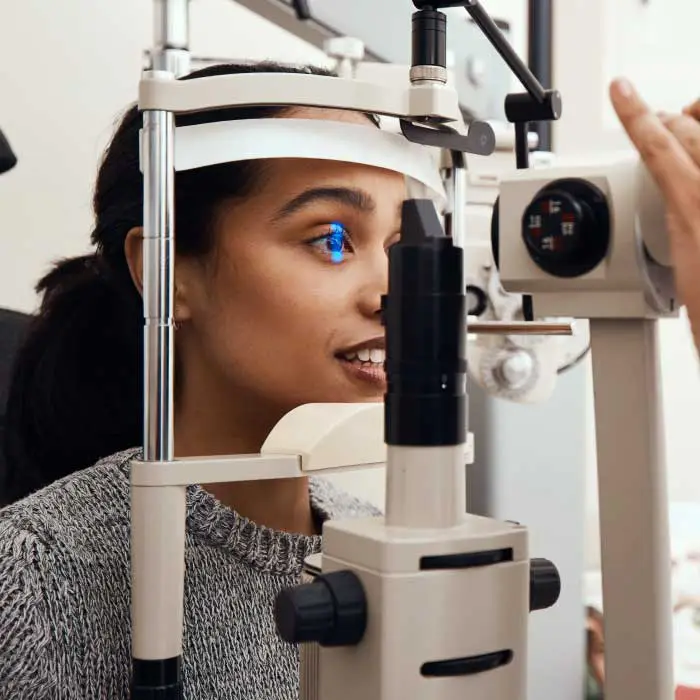
Diabetic Eye Exams
Managing diabetes requires regular eye exams to ensure that diabetes is not causing irreversible vision loss.
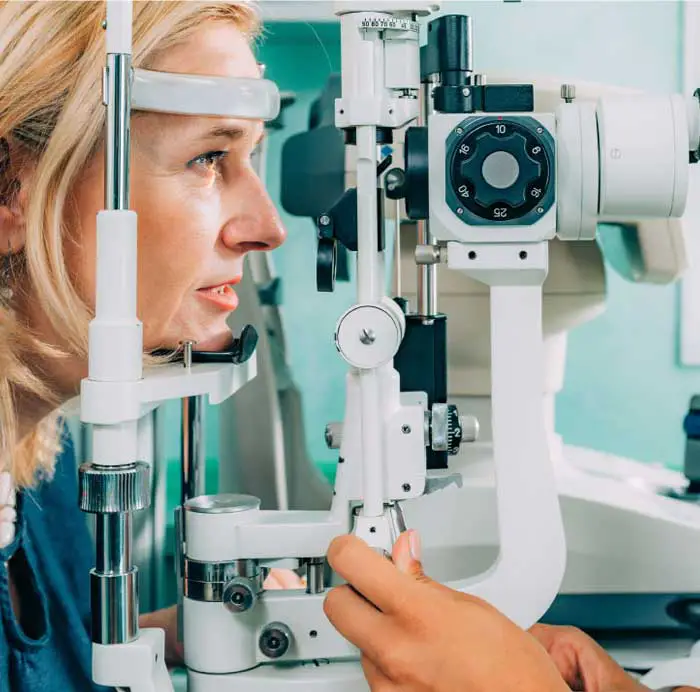
Dilated Eye Exams
Dilating the eyes enables our Edmonton optometrists to see more of the eye so that you many never see less.
Our Edmonton Eye Exams Are Comprised Of 4 Phases Of Evaluation
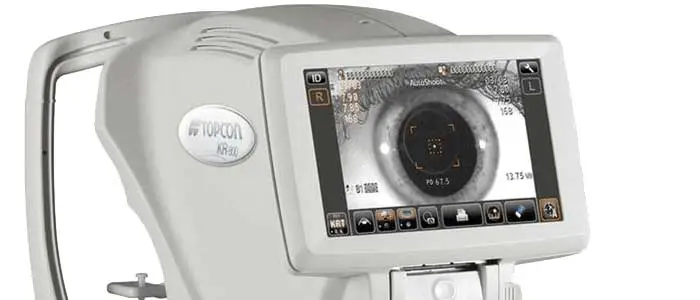
1. Eye Exam Pre-Testing
Corneal Thickness | Intraocular Pressures | Visual Field
Pre-testing is a detailed process that gathers all necessary information for the optometrist in advance of the optometrist-administered eye examination. This process involves completing a detailed patient history, as well as a series of standard tests. Pre-testing is an essential part of the comprehensive eye exam process, providing valuable information and visuals for both the optometrist and the patient.
More About Pre-Testing »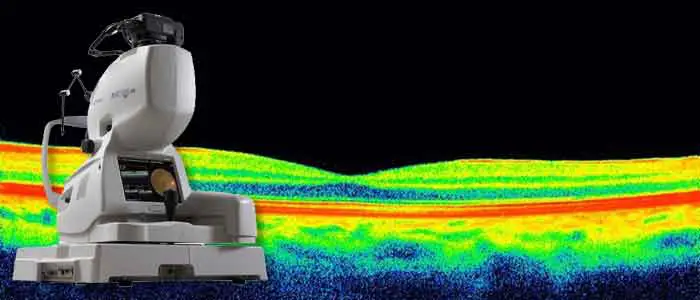
2. Advanced Diagnostic Testing
Retinal Photography, OCT, Topography
eye-deology Vision Care differentiates itself from other clinics by having the most advanced modern diagnostic specialty testing equipment. Specialty equipment, such as a wide-angle high-resolution retinal imager, Optical Coherence Tomography (OCT), Humphrey Visual Field Analyzer and corneal topographer, ensures that patients receive the best comprehensive eye care.
More About Advanced Testing »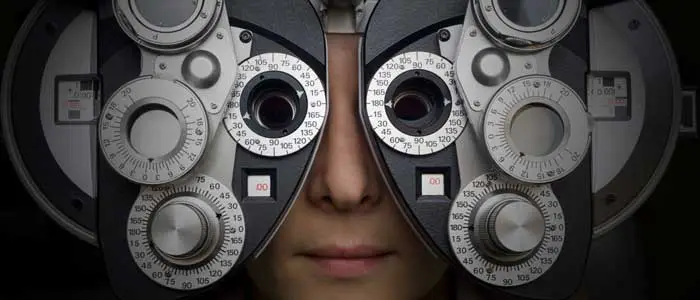
3. Optometrist Examination
Health Assessment & Disease Diagnosis
eye-deology Vision Care Edmonton optometrists perform a multitude of tests and assessments to evaluate ocular health, eye coordination, and visual acuity. In addition, they also evaluate the results of the tests and scans performed during pre-testing. As part of patient education, our optometrists also take the time to show and explain results to patients.
More About Doctor Exam »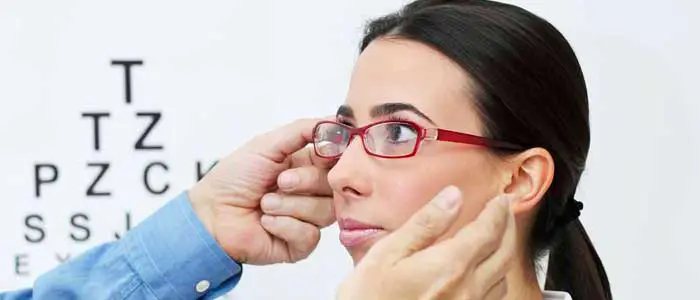
4. Eye Glass Consult
Prescription | Lens Selection | Digital Fitting
If you require corrective lenses to improve your vision, our licensed opticians will customize their fit to your unique attributes, needs, lifestyle, and budget. Our opticians are happy to provide you with information about the latest eyeglass frame and lens technologies available so you can make informed decisions and begin seeing and looking your best.
More About Eyewear Consult »